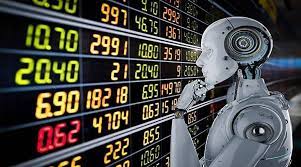
In the fast-paced world of financial markets, traders are constantly seeking ways to optimize their strategies, minimize risks, and maximize profits. One of the latest innovations in this pursuit is the development and utilization of forex robot. These automated trading systems have gained popularity among both novice and experienced traders for their potential to execute trades with precision and efficiency. In this article, we delve into the concept of Forex robots, exploring their functionalities, benefits, and considerations.
Understanding Forex Robots:
Forex robots, also known as Expert Advisors (EAs), are software programs designed to automatically execute trades in the foreign exchange market (Forex). These robots operate based on predefined trading algorithms and parameters, allowing them to analyze market conditions, identify trading opportunities, and place orders without human intervention.
The core function of a Forex robot is to automate the trading process, thereby eliminating emotions and subjective biases from decision-making. By relying on mathematical algorithms and technical indicators, these systems aim to make informed trading decisions with speed and consistency.
Key Features and Functionalities:
Forex robots come with a variety of features and functionalities tailored to different trading styles and preferences. Some common features include:
- Algorithmic Trading Strategies: Forex robots employ various trading strategies, such as trend following, scalping, grid trading, and breakout trading. These strategies are encoded into the software and executed based on predefined rules.
- Technical Analysis: Robots utilize technical indicators such as moving averages, MACD, RSI, and Fibonacci retracements to analyze price movements and identify potential trade setups.
- Risk Management: Effective risk management is crucial in trading. Forex robots often incorporate risk management parameters such as stop-loss and take-profit levels to limit losses and lock in profits.
- Backtesting and Optimization: Before deploying a Forex robot in live trading, traders can backtest the algorithm using historical data to assess its performance and optimize parameters for better results.
- 24/7 Trading: Unlike human traders, Forex robots can operate around the clock, taking advantage of trading opportunities in different time zones and market sessions.
Benefits of Forex Robots:
The adoption of Forex robots offers several benefits to traders:
- Emotion-Free Trading: By eliminating emotions such as fear and greed, Forex robots adhere strictly to the trading strategy, preventing impulsive decisions that can lead to losses.
- Increased Efficiency: Robots can analyze vast amounts of market data and execute trades within milliseconds, enabling swift responses to changing market conditions and opportunities.
- Diversification: Traders can deploy multiple Forex robots with different strategies, currencies, or timeframes, diversifying their trading portfolio and reducing overall risk.
- Backtesting and Optimization: The ability to backtest trading strategies allows traders to refine and optimize their algorithms, enhancing performance and robustness before risking real capital.
- Accessibility: Forex robots make trading accessible to individuals with limited time or expertise in financial markets, as they do not require constant monitoring or manual intervention.
Considerations and Challenges:
While Forex robots offer numerous advantages, traders should be aware of potential challenges and considerations:
- Market Volatility: Rapid changes in market conditions, particularly during news releases or geopolitical events, can pose challenges for Forex robots, as they may struggle to adapt to sudden price movements.
- Over-Optimization: Excessive backtesting and parameter optimization can lead to overfitting, where the algorithm performs well on historical data but fails to generalize to new market conditions.
- Technical Issues: Connectivity problems, server downtime, or software bugs can disrupt the operation of Forex robots, potentially resulting in missed opportunities or erroneous trades.
- Lack of Adaptability: While Forex robots excel in executing predefined strategies, they may struggle to adapt to unforeseen market developments or black swan events that fall outside their programmed parameters.
- Dependency on Market Conditions: The effectiveness of Forex robots is highly dependent on the prevailing market conditions and the accuracy of the underlying trading strategy. Periods of low volatility or erratic price movements may challenge the performance of these systems.
Conclusion:
Forex robots represent a significant advancement in the realm of automated trading, offering traders the opportunity to execute trades with precision, efficiency, and consistency. By harnessing the power of algorithms and technology, these systems aim to streamline the trading process and optimize performance. However, traders should approach the use of Forex robots with caution, considering the complexities of financial markets and the potential challenges associated with automated trading. Ultimately, the successful integration of Forex robots into trading strategies requires careful planning, continuous monitoring, and adaptation to evolving market dynamics.